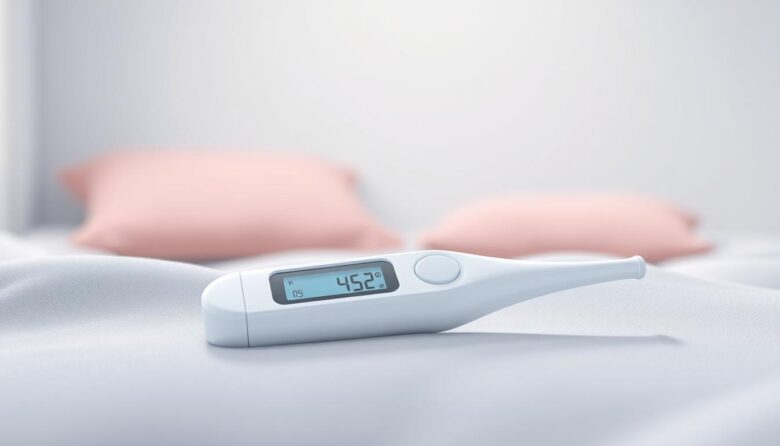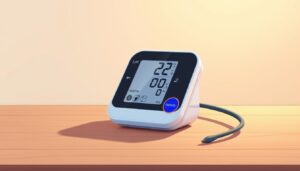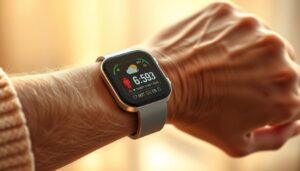Monitoring health at home becomes especially important as we age. A reliable way to track wellness is by checking body temperature regularly. Modern devices designed for this purpose offer quick, accurate readings, helping caregivers spot potential issues early. Dr. Janice Johnston, Chief Medical Officer at Redirect Health, emphasizes that knowing when to call a doctor can make all the difference in managing senior health.
Today’s temperature-checking tools eliminate the risks of older mercury models. They’re safer, faster, and easier to read—critical features for older adults. A single reading takes seconds, reducing discomfort while providing precise results. This accuracy helps families decide whether to seek medical help or continue monitoring at home.
Regular checks act as an early warning system for infections or other conditions common in seniors. Consistent tracking allows caregivers to notice patterns and act before minor concerns become serious. With clear displays and simple controls, these devices empower both seniors and their helpers to stay proactive about health.
Key Takeaways
- Modern temperature devices provide fast, precise results for effective health monitoring
- Safety features make them superior to traditional mercury-based options
- Regular checks help detect health changes early in aging adults
- Easy-to-read displays simplify use for seniors and caregivers
- Immediate results support better decision-making about medical care
Introduction: The Importance of Temperature Monitoring in Senior Care
Spotting health changes quickly can make all the difference when caring for older adults. Body temperature serves as an early warning sign for infections or other issues that seniors might not notice right away. Since aging bodies often respond differently to illness, regular checks help you stay ahead of potential problems.
Understanding the Role of Thermometers in Home Health
Modern tools for measuring body heat have become essential in home care. They let you track wellness trends over time, which is vital because seniors’ immune systems may not fight off illnesses as effectively. A normal reading typically falls between 97°F and 99°F, while 100.4°F or higher signals a fever needing attention.
Consistent tracking helps you spot patterns. Is your loved one’s temperature slightly elevated every evening? Does it return to normal by morning? These details matter when discussing health changes with doctors.
Why Accurate Readings Matter for Your Loved Ones
Precision matters because small temperature shifts can indicate big concerns. A device that’s off by even one degree might delay needed care or cause unnecessary worry. Reliable results let you share concrete data with healthcare providers, helping them adjust treatments faster.
Easy-to-use designs mean less stress for everyone involved. Clear displays and simple buttons remove guesswork, letting you focus on what truly matters—keeping your family member healthy and comfortable at home.
Key Features to Look for in Your Thermometer
Choosing the right tools for health monitoring requires attention to details that simplify daily use. Three elements stand out when selecting a device: visibility, accuracy, and ease of use. These critical features ensure reliable results while minimizing stress for caregivers and seniors alike.
Display Clarity and Backlight Options
A large screen with bold numbers is non-negotiable. Many older adults struggle with small text, especially in dim bedrooms or at night. Look for a backlit display that glows softly, allowing you to check readings without turning on harsh lights.
Color-coded results add another layer of clarity. Devices that shift from green (normal) to yellow (elevated) to red (high) provide instant visual cues. This eliminates guesswork during urgent moments when every second counts.
Ease of Calibration and Operation
Regular calibration keeps your device accurate over time. Opt for models with automatic checks or simple manual adjustments. A one-button design works best—press once to start, and you’re done. No confusing menus or hidden settings.
Ergonomic shapes and raised buttons matter too. These design choices help arthritic hands grip the device securely. When health concerns arise, straightforward operation lets you focus on caregiving instead of troubleshooting tools.
Accuracy and Readability: Essentials for Senior Use
Precision matters when tracking health changes in older adults. Devices must deliver trustworthy results while being simple to interpret. Even slight variations in body heat can signal urgent issues, making both accuracy and clarity non-negotiable for caregivers.
Reliable Temperature Readings
Modern devices excel at catching subtle shifts—think 0.1-degree differences that older models might miss. Rectal measurements remain the gold standard for precision, while forehead scans offer a close second. Oral, ear, and underarm methods work too but may vary slightly.
Consistency builds confidence. When your tool matches medical-grade equipment, you’ll know whether a 99.5°F reading is normal for your loved one or a reason to call their doctor. This reliability helps spot patterns, like evening fevers that fade by dawn.
Large, Easy-to-Read Displays
Bold numbers on high-contrast screens remove guesswork. No squinting needed, even in dim light. Some models add color cues—green for normal, red for fever—giving instant clarity during stressful moments.
These designs accommodate aging eyesight. Raised buttons and simple menus keep operation straightforward. When seconds count, a glance tells you everything you need to know, letting you focus on care instead of deciphering tiny digits.
User-Friendly Design Tailored to Senior Needs
When selecting health devices for older adults, ease of use becomes a top priority. Modern tools now incorporate thoughtful design choices that address common challenges like shaky hands or fading eyesight. A simple device often works better than one packed with unnecessary features.
Many models now have wider grips with textured surfaces, making them easier to hold securely. Lightweight materials prevent hand strain during frequent checks—a relief for those managing arthritis. These subtle adjustments turn routine tasks into comfortable habits rather than daily struggles.
Clear audio signals matter just as much as visual ones. A distinct beep confirms when readings finish, helping those with hearing difficulties stay informed. No complicated menus or setup steps mean less confusion and more consistent monitoring.
Straightforward operation keeps the focus on health, not technology. Devices that work right out of the box encourage regular use without frustration. By prioritizing accessibility in design, caregivers and seniors alike gain confidence in managing wellness at home.
Infrared Options: A Non-Contact Approach to Comfort
Innovative temperature-checking methods are changing how caregivers monitor seniors. Devices using infrared technology detect body heat from up to two inches away, making them ideal for restless or sensitive individuals. This approach keeps both users and caregivers comfortable during health checks.
Benefits of No-Touch Technology
No physical contact means less stress for seniors with fragile skin or mobility challenges. Forehead scanning works well for those who struggle with oral measurements or sudden movements. It’s also safer for households managing contagious illnesses.
These devices prevent cross-contamination between family members. Caregivers can check temperatures without disturbing sleep or causing discomfort. The hygienic design is especially helpful for those with dementia who might resist traditional methods.
Quick Response Times for Timely Readings
Infrared models like the Vicks Non-Contact deliver results in 1-2 seconds. Fast measurements help when working with seniors who can’t stay still long. Color-coded displays (green/yellow/red) make interpreting results effortless.
Rapid response times reduce frustration during daily checks. You’ll spend less time coaxing cooperation and more time addressing health needs. This efficiency matters most during fever spikes or nighttime emergencies.
Digital Thermometers: Trusted Tech for Accurate Temperature Monitoring
Modern healthcare relies on tools that deliver precise data quickly. Advanced devices now set the standard for tracking body heat, combining speed with hospital-grade accuracy. Unlike older mercury models, these tools eliminate guesswork through clear numerical displays and consistent performance.
Built-in sensors maintain precision across hundreds of uses. No more worrying about calibration issues that plagued older designs. Whether checking orally, under the arm, or rectally, you get reliable results down to one decimal point—like 98.6°F versus 99.0°F.
Versatile measurement options adapt to your loved one’s needs. Flexible tips work for seniors who struggle to hold devices steady. Disposable covers prevent germ spread between users, while replaceable probes extend the tool’s lifespan.
Clear screens remove interpretation errors. Bold numbers show exact readings instead of vague lines on glass. This clarity helps when sharing data with doctors during consultations or tracking trends over weeks.
These features make modern devices indispensable for home care. You’ll spend less time troubleshooting and more time supporting your family member’s wellbeing with confidence.
Top-Rated Thermometer Picks from Health Reviews
Finding the right tools for senior care starts with trusted recommendations from rigorous testing. Our team evaluated 40 models through lab trials and home use, focusing on accuracy, speed, and accessibility. Three products rose above the rest with standout features that simplify daily health checks.
Standout Products and Their Unique Features
The Vicks Non-Contact Infrared model leads with its “Fever Insight Technology.” It delivers color-coded results in under two seconds and includes a mute option for nighttime checks. No waking sleeping seniors for temperature scans.
Prefer forehead measurements? The GE Digital Forehead Thermometer stores 32 readings to track trends. Its point-and-read design requires minimal effort—perfect for quick assessments. You’ll spot patterns faster with this memory feature.
For versatile use, the iProven Ear and Forehead model shines. Switch between measurement methods without losing accuracy. The color-coded screen turns red at 100.4°F, giving clear fever alerts. Dual functionality means one device serves multiple needs.
These products passed strict tests for response time and readability. When choosing, prioritize features matching your loved one’s comfort and care requirements. Reliable tools make health monitoring less stressful for everyone involved.
Memory Storage and Tracking for Consistent Care
Keeping track of health changes becomes simpler when your tools do the remembering for you. Modern devices like the Vicks model store up to 50 past results, while the GE option holds 32—no more scribbled notes or lost records. This automatic logging turns scattered data into clear health patterns you can share with doctors.
Recording and Recalling Past Readings
Date-stamped entries in devices like the HoMedics model create a timeline of wellness. Notice if temperatures spike every afternoon or dip after medication. These details help spot infections before symptoms become obvious.
Quick access to previous results saves time during medical visits. Instead of guessing last week’s numbers, show precise records from your device. Doctors appreciate having concrete data to guide treatment plans.
Tracking trends helps you act faster. A gradual rise over three days might mean brewing trouble, even if each reading stays below fever level. Your temperature history becomes a conversation starter with healthcare teams.
Look for models with one-touch recall buttons. With 50-entry memory storage, you’ll always have answers when asked: “What was their temperature yesterday?” Consistent tracking puts you in control of senior health management.
Multi-Purpose Designs: Beyond Body Temperature
Today’s health tools do double duty as household safety assistants. Devices like the Braun No Touch 3-in-1 go beyond checking fevers, helping you manage risks in kitchens, bathrooms, and living spaces. This multi-purpose approach turns one tool into a solution for multiple care needs.
Three-in-One Solutions for Home Safety
Scalding prevention becomes effortless with bathwater checks. Models like the Berrcom thermometer scan liquid heat in seconds—critical for seniors with reduced skin sensitivity. A quick scan ensures bathwater stays below 110°F, preventing painful burns.
Meal safety gets simpler too. The HoMedics model verifies food reaches safe internal temperatures. Chicken should hit 165°F, while soups need 140°F minimum. These checks protect seniors with weaker immune systems from foodborne illnesses.
Room comfort matters year-round. Devices tracking ambient heat help maintain 68-74°F ranges ideal for older adults. Spot chilly corners in winter or overheated areas in summer, then adjust thermostats accordingly.
Why juggle three gadgets when one works? Versatile tools like these cut clutter while covering all bases. You’ll save time and money while keeping your loved one’s environment consistently safe.
Features Spotlight: Display, Backlight, and Calibration Techniques
Clear visibility transforms temperature checks from frustrating to effortless. Modern devices use magnified screens like the Berrcom model, making numbers appear larger for aging eyes. You’ll spot readings instantly, even without glasses—no squinting required.
Color-coded displays simplify health assessments. Green means normal, yellow signals caution, and red alerts for fever. This visual shorthand works wonders during late-night checks when quick decisions matter most.
Backlight options adapt to any lighting. The HoMedics device glows blue for typical temperatures and shifts to red for fevers. These subtle cues help you interpret results without waking a resting senior.
Regular calibration ensures lasting accuracy. Some tools self-adjust, while others need simple button presses. Either way, you’ll trust every reading—critical when tracking slight changes over days or weeks.
Thoughtful design techniques bridge the gap between technology and accessibility. With intuitive displays and reliable performance, these features let you focus on caregiving rather than struggling with complicated tools.



